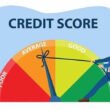Low-Power Variable Optics (LPVO) have gained immense popularity among shooters due to their versatility in various lighting conditions. Whether for tactical applications, hunting, or competition shooting, LPVO scopes provide flexibility by offering both low magnification for quick target acquisition and higher magnification for precision shots. However, one critical aspect that often determines an LPVO’s effectiveness is its performance in low-light environments.
In this article, we will explore how LPVO scopes perform in dim lighting, their advantages, and the features that enhance visibility in low-light conditions. We will also discuss top-rated models like the Odin LPVO and what makes them the best LPVO for low-light shooting.
Understanding Low-Light Shooting Challenges
Low-light environments, such as dawn, dusk, or heavily shadowed areas, present unique challenges for shooters:
- Reduced Visibility: Without sufficient illumination, targets can become difficult to identify.
- Decreased Contrast: Darker settings can blend targets into their surroundings.
- Eye Strain: Extended exposure to low-light conditions can cause eye fatigue.
- Slower Target Acquisition: Inadequate lighting can make it harder to engage targets quickly.
An LPVO optic with the right features can significantly mitigate these challenges, making it a reliable tool for night shooting.
Features That Enhance LPVO Performance in Low-Light Conditions
1. Illuminated Reticle
One of the most significant advantages of an LPVO illuminated reticle is its ability to enhance contrast against dark backgrounds. This feature is essential for night shooting, as it prevents the reticle from disappearing in low-light conditions.
Key benefits of an illuminated reticle include:
- Faster target acquisition
- Improved accuracy in dim lighting
- Better contrast against dark environments
2. Glass Quality and Lens Coating
The best LPVO scopes use high-quality glass with multiple coatings to maximize light transmission. Fully multi-coated lenses reduce glare and reflections, allowing more light to pass through to the shooter’s eye.
Look for LPVO scopes with:
- Extra-low dispersion (ED) glassfor superior clarity
- Anti-reflective coatingsto enhance brightness
- Large objective lensesto gather more light
3. Exit Pupil and Eye Relief
A larger exit pupil diameter ensures that more light reaches your eye, which is crucial in low-light settings. Ideally, an LPVO should offer:
- At least 4mm exit pupilat high magnification
- Generous eye reliefto reduce eye strain and allow comfortable viewing
4. Low-Light Magnification Considerations
While high magnification can be useful for precision, it also reduces brightness. In low-light conditions, a 1-6x or 1-8x LPVO is often preferred over higher magnifications since lower power settings allow more light to pass through the optic.
5. Durability and Weather Resistance
LPVO scopes built for night or low-light shooting should be:
- Fog-proof and waterproofto maintain clarity in various conditions
- Shockproofto handle recoil and rough environments
Best LPVO Scopes for Low-Light Performance
1. Odin LPVO
The Odin LPVO stands out as one of the best options for low-light environments due to:
- High-quality, fully multi-coated lensesthat enhance brightness
- Illuminated reticle with multiple brightness settings
- Durable, fog-proof, and waterproof construction
- Smooth magnification transitionfor quick adjustments in dynamic shooting scenarios
2. Vortex Razor HD Gen III 1-10×24
This high-performance LPVO offers:
- HD glass for exceptional clarity
- Bright and crisp illuminated reticle
- Excellent low-light visibility at lower magnifications
3. Trijicon Credo 1-6×24
A robust and reliable LPVO with:
- Superior light transmission
- Highly visible red or green illuminated reticle
- Battery-free fiber optic and tritium illumination
LPVO for Night Shooting: Tips and Techniques
1. Use the Right Illumination Setting
Adjust your reticle brightness to match ambient light conditions. Too bright can cause glare, while too dim may be difficult to see.
2. Pair with a Weapon Light
A good tactical weapon light complements an LPVO optic by illuminating targets without compromising night vision.
3. Optimize Magnification
For low-light scenarios, stick to lower magnification settings (1-4x) to allow maximum light transmission.
4. Maintain Proper Eye Relief
Position your eye correctly to maximize the exit pupil and avoid dark rings around the sight picture.
5. Consider a Night Vision-Compatible LPVO
Some high-end LPVOs, including select Odin LPVO models, are night vision-compatible, allowing seamless integration with NV devices.
Conclusion
An LPVO scope is a versatile optic that can perform exceptionally well in low-light conditions when equipped with the right features. The best LPVO for night shooting should have high-quality glass, an illuminated reticle, and superior light transmission. Models like the Odin LPVO, Vortex Razor HD Gen III, and Trijicon Credo are excellent choices for shooters needing reliable low-light performance.
By selecting the right LPVO optic and following best practices, shooters can effectively enhance visibility, improve accuracy, and maintain an advantage in low-light environments. Whether for tactical use, hunting, or competition shooting, investing in a high-quality LPVO will ensure optimal performance when lighting conditions are less than ideal.







